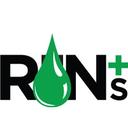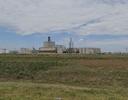Portuguese researchers study alternative biodiesel processes

March 24, 2014
BY Ron Kotrba
Researchers from the University of Porto, Portugal, are looking at water-free methods to purify biodiesel.
The study involved heterogeneous transesterification using what the researchers say is a very active calcium glyceroxide catalyst followed by efforts to remove soaps through pretreating the crude biodiesel (methyl ester content of 90.2–91.2 percent by weight, and calcium content of 372-393 parts per million) with sodium carbonate (Na2CO3) and, afterward, running the fuel through ion exchange resins (6 percent by weight) or a ceramic membrane (0.1 μm).
The purification was effective using biodiesel produced from both soybean and used cooking oils, and resulting fuel quality was comparable to that of conventional water-washing.
Advertisement
While dry-washing biodiesel is not uncommon, the researchers say the effectiveness of this treatment could be explained by calcium elimination through precipitation as calcium carbonate (CaCO3) during pretreatment, and sodium soaps removal by absorption into the resin or filtration by the ceramic membrane, according to the micelle formation mechanism. The researchers say the process “presents a high potential to remove calcium soaps from biodiesel,” and “could provide significant economic and environmental benefits compared to other more energy intensive water-based production methods.”
“In some countries like Brazil, biofuels provide nearly a quarter of their road transport needs,” said David Brown, the Institution of Chemical Engineers (IChemE) chief executive. “In the European Union, negotiations are under way to increase biofuels for transport to 10 percent. And Indonesia—the world's largest producer of palm oil—has announced plans to increase biodiesel production to reduce its reliance on crude oil imports. However, current production processes do not always deliver the full potential of biofuels to help reduce greenhouse gas emissions and there are continuing challenges including economic and environmental. But demand for biofuels is clearly increasing and advancement in chemical engineering processes, such as the use of heterogeneous catalysis and water-free methods using membranes, are very welcome to consolidate biofuels as a globally accepted and sustainable source of renewable energy.”
Advertisement
Related Stories
Biodiesel capacity in the U.S. and Canada dipped slightly stable in 2024, with several renewable diesel producers reporting headwinds and lower margins alongside a drove of SAF projects in various stages of development.
The IEA’s Task 39 group has new research regarding the development and status of the sustainable aviation fuel industry.
The U.S. EPA on Nov. 16 released updated RIN data, reporting that nearly 2.11 billion RINs were generated under the RFS in October, up from 1.81 billion generated during the same month of last year.
Conestoga to host SAFFiRE cellulosic ethanol pilot plant
Conestoga Energy and SAFFiRE Renewables LLC announced on Nov. 16 their agreement for Conestoga to host SAFFiRE’s cellulosic ethanol pilot plant at Conestoga’s Arkalon Energy ethanol facility in Liberal, Kansas.
Officials at Calumet Specialty Products Partners L.P. discussed the company’s proposed plans to boost sustainable aviation fuel (SAF) production at its Montana Renewables biorefinery during third quarter earnings call, held Nov. 9.
Upcoming Events










